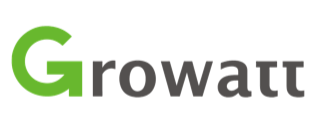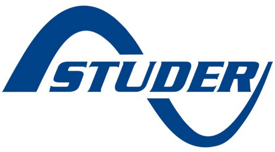Solar System Balance of System (BOS): An In-Depth Guide
- Hyde Source
- Jul 28
- 5 min read
When we talk about a solar photovoltaic (PV) system, the first image that often comes to mind is the solar panels themselves. However, for a solar system to function effectively, safely, and reliably, a vast array of other components are required. These essential elements, excluding the solar panels, are collectively known as the Balance of System (BOS).
The BOS can account for a significant portion of the total solar project cost, sometimes even two-thirds, and its quality directly impacts the system's efficiency, longevity, and safety. Understanding the BOS is crucial for anyone involved in solar energy, from homeowners considering an installation to large-scale project developers.
What is Balance of System (BOS)?
The Balance of System (BOS) encompasses all the components and equipment in a solar energy system that are necessary for it to operate, convert solar energy into usable electricity, and integrate with the electrical grid or other end-use applications, excluding the solar panels (PV modules) themselves.
Key Components of the Solar System BOS
The BOS includes a wide range of mechanical, electrical, and protective components, forming the critical infrastructure of any solar power system.
1. Inverters
Function: Solar panels produce Direct Current (DC) electricity, but most homes and electrical grids use Alternating Current (AC). Inverters are the crucial devices that convert the DC power from the solar panels into usable AC power.
Types of Inverters:
String Inverters: The most common type for residential and small commercial systems. Multiple solar panels are wired together in a "string," and this entire string connects to a single inverter.
Pros: Cost-effective, simple design.
Cons: Susceptible to "single point of failure" (if one panel in the string is shaded or underperforms, it affects the output of the entire string).
Microinverters: Installed on each individual solar panel. Each microinverter converts the DC power from its specific panel into AC power.

Pros: Maximizes power output from each panel (due to individual Maximum Power Point Tracking - MPPT), excellent shading tolerance (one shaded panel doesn't affect others), easier system expansion, panel-level monitoring.
Cons: Higher upfront cost per watt, more complex installation on the roof.
Power Optimizers: A hybrid solution. These devices are installed on each solar panel (like microinverters) to optimize the DC power at the panel level, but they send this optimized DC power to a central string inverter for conversion to AC.

Pros: Combines benefits of both (panel-level optimization, central inverter simplicity), better shading tolerance than string inverters, lower cost than microinverters.
Hybrid Inverters: Designed for systems with battery storage. They manage power flow between solar panels, batteries, and the grid, enabling both grid-tied operation and backup power during outages.
Off-Grid (Stand-Alone) Inverters: Used in systems completely independent of the utility grid. They draw DC energy from batteries (charged by solar panels) and convert it to AC for direct use, often incorporating battery chargers.
2. Mounting Systems (Racking)
Function: These structures physically secure the solar panels to the roof or ground, ensuring they are positioned at the optimal angle and orientation for maximum sunlight exposure and can withstand environmental forces.
Common Materials:
Galvanized Steel (GI): Mild steel coated with zinc for corrosion resistance. Strong, durable, and cost-effective, often used for large ground-mounted systems.

Mild Steel (MS): Mild steel coated with Zn-Al Paint for corrosion resistance. Requires a coat of paint once every 3-4 years to prevent rusting.

Aluminum: Lightweight, naturally corrosion-resistant, and aesthetically pleasing. Preferred for rooftop installations due to reduced roof load and for coastal areas.

Galvalume Steel: Steel coated with an aluminum-zinc alloy, offering superior corrosion resistance to galvanized steel, but less ideal for direct saltwater exposure.

3. Wiring and Cabling
Function: Electrical cables connect all components of the solar system, from panels to inverters, batteries, and the electrical grid.
DC Cables: Transmit direct current from solar panels to the inverter. Must be UV-resistant and rated for outdoor use.
AC Cables: Carry alternating current from the inverter to the electrical panel or grid connection point.
Connectors: Specialized connectors (e.g., MC4 connectors) ensure secure, weatherproof, and safe connections between panels and strings.

Conduits: Pipes that protect electrical wiring from physical damage, moisture, and environmental exposure.
4. Electrical Safety and Protection Equipment
Function: These components ensure the safe operation of the solar system, protecting against electrical faults, overcurrents, and surges.
Combiner Boxes: Electrical enclosures that combine the DC output from multiple strings of solar panels into a single, larger DC output for the inverter. They often house fuses or circuit breakers for string-level protection.

DC Disconnects: Safety switches that allow for manual disconnection of the DC power from the solar array, crucial for maintenance and emergencies.
AC Disconnects: Safety switches that allow for manual disconnection of the AC power from the inverter to the electrical panel or grid.
Circuit Breakers and Fuses: Overcurrent protection devices that automatically interrupt the circuit in case of overloads or short circuits, preventing damage and fire.
Surge Protectors (SPD): Devices that protect sensitive electronic components (like inverters) from voltage spikes caused by lightning strikes or grid disturbances.
Grounding and Bonding Systems: Essential for safety, providing a safe path for fault currents to dissipate into the earth, preventing electrical shock and fire hazards. All metal components must be properly bonded.
5. Energy Storage Systems (Batteries)
Function: For off-grid or hybrid solar systems, batteries store excess electricity generated by solar panels for use when the sun isn't shining (e.g., at night, during cloudy days, or power outages).
Common Battery Types:
Lead-Acid Batteries: Older, more affordable technology (e.g., Flooded, Gel, AGM). Heavier, shorter lifespan, and lower depth of discharge compared to lithium-ion. Often used in smaller, budget-conscious off-grid systems.

16 nos. Lead Acid Battery Setup Lithium-Ion Batteries (Li-ion): Modern, higher-performance batteries (e.g., Lithium Iron Phosphate - LFP/LiFePO4, NMC). LFP is popular for solar due to its longer cycle life, higher depth of discharge, faster charging, and improved safety.

Lithium Battery Stack
6. Monitoring Systems
Function: Devices and software that track the performance and output of the solar system in real-time.
Data Collection: Sensors and inverters measure energy production, consumption, and other parameters.
Cloud Storage & Analytics: Data is securely stored and analyzed on cloud-based platforms.
User Dashboard: Provides clear insights, reports, and alerts via web or mobile apps.
Benefits: Helps maximize efficiency by detecting underperformance early, simplifies maintenance by providing fault alerts, reduces electricity costs, and offers remote accessibility.
The Critical Importance of BOS Quality
The quality of BOS components is paramount for the overall success and reliability of a solar energy system.
System Efficiency and Energy Yield: High-quality inverters minimize energy conversion losses. Properly sized and installed wiring reduces resistive losses. An optimized mounting system ensures panels are at the best angle. Poor quality BOS can lead to significant energy losses, directly impacting the system's overall output and financial returns.
Reliability and Longevity: BOS components are constantly exposed to environmental stressors (temperature extremes, UV, humidity). Durable, certified components are built to withstand these conditions for decades, ensuring the system operates reliably throughout its warranted lifespan. Substandard components can fail prematurely, leading to frequent maintenance and costly replacements.
Safety: Electrical safety components (disconnects, circuit breakers, grounding) are non-negotiable. High-quality BOS minimizes the risk of electrical faults, short circuits, fires, and electric shock, protecting both property and lives.
Compatibility and Integration: All BOS components must be compatible and seamlessly integrated to ensure optimal system performance. Incompatible parts can lead to inefficiencies, malfunctions, and even system failures.
Conclusion
The Balance of System (BOS) is the unsung hero of any solar PV installation. While solar panels convert sunlight into electricity, it is the sophisticated network of inverters, mounting structures, wiring, safety devices, and (optionally) batteries and monitoring systems that truly brings a solar project to life.
Investing in high-quality BOS components is not merely an added expense; it is a fundamental requirement for maximizing energy yield, ensuring long-term reliability, guaranteeing safety, and ultimately achieving the best return on your solar investment.
As the solar industry continues to grow, the focus on optimizing and standardizing BOS components will remain crucial for driving down costs and expanding the global adoption of clean, renewable energy.










